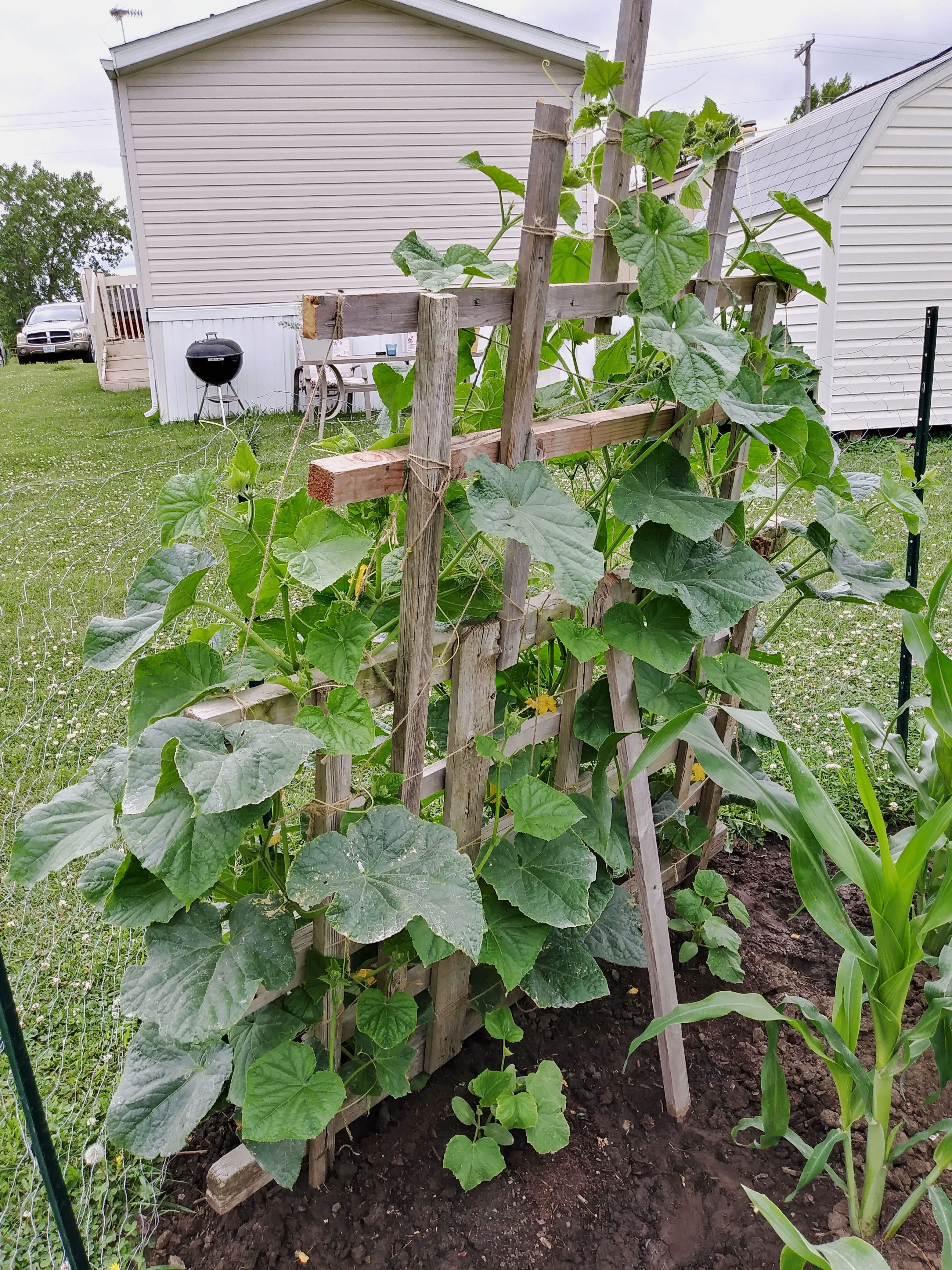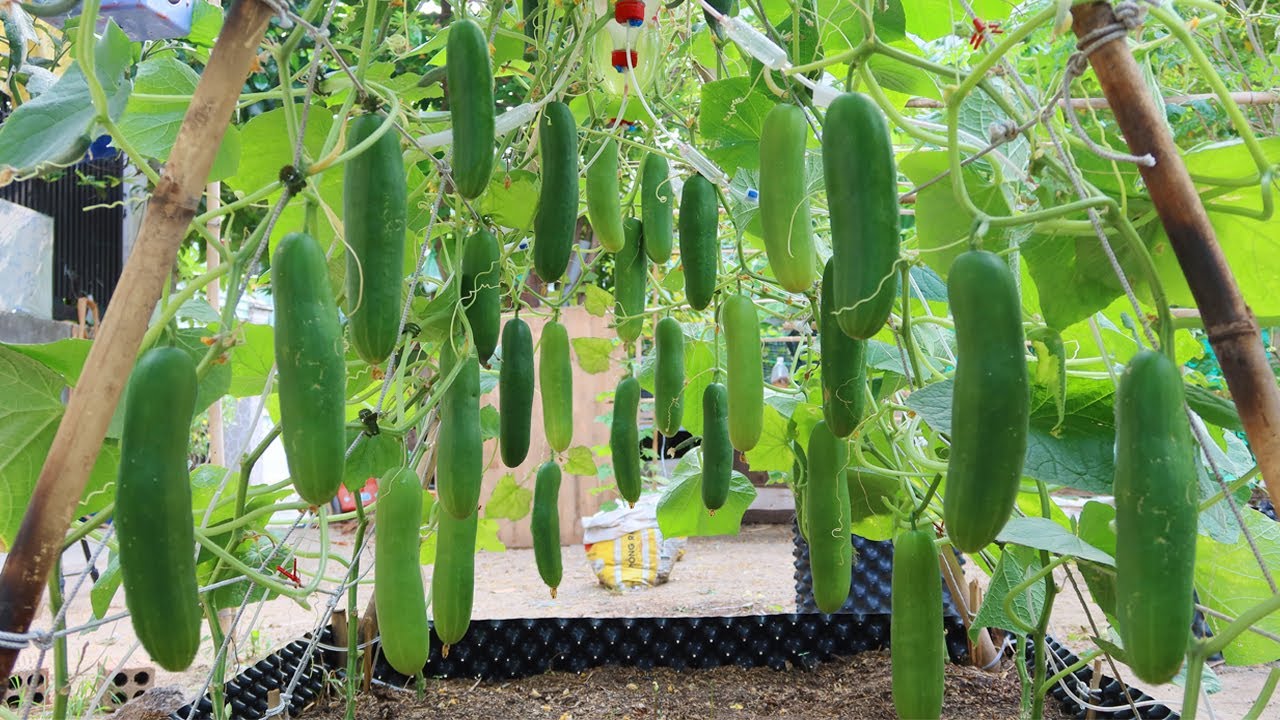Planting cucumbers can be rewarding and simple. Cucumbers thrive in warm weather and need rich soil.
Starting a cucumber garden is a great idea for fresh veggies. Cucumbers can be grown in gardens, pots, or raised beds. They grow quickly and can yield a lot. But what’s the best way to plant them? This blog will guide you through the top methods.
Learn how to prepare your soil, choose the right seeds, and care for your plants. With the right tips, you can enjoy a plentiful cucumber harvest. Whether you’re a beginner or a seasoned gardener, these tips will help you succeed. Let’s dig in and discover the best way to plant cucumbers!

Credit: bonnieplants.com
Choosing The Right Cucumber Variety
Selecting the right cucumber variety is crucial for a successful garden. Different types thrive in various climates and soil conditions. Choose wisely to enjoy a bountiful harvest.
Types Of Cucumbers
Cucumbers come in many types. There are slicing cucumbers for salads. Pickling cucumbers are for pickles. Bush cucumbers grow in small spaces. Seedless cucumbers are easy to eat. Heirloom varieties have unique flavors. Choose based on your needs.
Climate Considerations
Cucumbers love warm weather. They need lots of sunlight. Cold climates can harm them. In hot climates, choose heat-tolerant types. Humid areas need disease-resistant varieties. Dry areas need drought-tolerant plants. Choose wisely for best results.

Credit: www.youtube.com
Preparing The Soil
Loosen the soil to a depth of 12 inches and mix in compost. Ensure the ground drains well for healthy cucumber growth.
Soil Testing
Testing the soil is important. It helps you know what your soil needs. A good test can show the pH level. The pH level should be between 6.0 and 7.0. This is good for cucumbers. The test also shows nutrient levels. You can find out if you need more nitrogen or phosphorus. These are important for plant growth.
Amending The Soil
If the soil is not good, you need to improve it. Adding compost makes soil better. Compost adds organic matter. It helps the soil hold water. Manure can also help. It adds nutrients. Make sure the manure is well-rotted. Fresh manure can harm plants. Another way to amend soil is to add lime. Lime increases the pH level. This is good if your soil is too acidic.
Planting Time
Optimal planting season for cucumbers is important. Cucumbers thrive in warm weather. The best time is late spring. Soil temperature should be at least 70°F. This ensures good growth.
Knowing the frost dates is crucial. Cucumbers cannot tolerate frost. Plant them after the last frost. This protects young plants. Check local frost dates online. This helps in planning the planting.
Sowing Seeds Vs. Transplants
Planting cucumber seeds directly in the soil is common. Direct seeding saves time and effort. Soil temperature must be warm, above 60°F. Space seeds 12 inches apart in rows. Keep soil moist but not wet. Seeds germinate in 7-10 days. Thin seedlings to the strongest plants.
Transplants give a head start on growing season. Start seeds indoors 3-4 weeks before the last frost. Use seedling trays with potting mix. Keep trays in a warm, sunny spot. Harden off seedlings before planting outside. Space transplants 12-18 inches apart in rows.
Plant Spacing
Keep rows at least 4 feet apart. This gives plants space to grow. It helps sunlight reach all parts. Also, it makes watering easy.
Space plants 12 inches apart. This helps each plant get enough nutrients. It also prevents diseases from spreading. Proper spacing leads to healthy cucumbers.
Watering Techniques
Cucumbers need a lot of water to grow well. They should be watered deeply. This means the water reaches the roots. Try to water them at least 1 inch per week. During hot weather, water them more often. Check the soil. If it is dry, water the plants. Morning is the best time to water.
Use a soaker hose or drip system for watering cucumbers. These methods deliver water directly to the soil. They help reduce water waste. Sprinklers can also be used. But they might wet the leaves too much. Wet leaves can cause diseases. Be careful with the amount of water.
Fertilizing Cucumbers
Use a balanced fertilizer for cucumbers. Options include 10-10-10 or 5-10-10. These numbers show the amount of nitrogen, phosphorus, and potassium. Nitrogen helps leaves grow. Phosphorus helps roots and flowers. Potassium helps the whole plant stay healthy. Organic fertilizers work well too. Compost or manure are good choices. Avoid high nitrogen fertilizers. They can cause more leaves but fewer cucumbers.
Start by preparing the soil. Add fertilizer before planting. Mix it into the soil well. Fertilize again when plants start to flower. Use a side-dressing method. Place fertilizer a few inches away from plants. Water the soil after fertilizing. This helps nutrients reach the roots. Fertilize every three weeks during the growing season. This keeps plants strong and healthy. Do not over-fertilize. Too much can harm plants.

Credit: www.gardeningknowhow.com
Pest And Disease Management
Cucumber plants often attract pests. Aphids are small insects that suck sap from leaves. Cucumber beetles have yellow and black stripes. They chew on leaves and flowers. Spider mites are tiny and create webs on plants. Slugs and snails leave holes in leaves. They are most active at night.
Diseases can hurt cucumber plants. Powdery mildew causes white spots on leaves. Downy mildew creates yellow patches. Bacterial wilt makes plants droop and die. Fusarium wilt turns leaves yellow. Anthracnose causes dark spots on leaves.
To prevent diseases, keep plants healthy. Water the base of plants, not the leaves. Remove dead leaves and debris. Ensure good air circulation around plants. Rotate crops every year. Use disease-resistant cucumber varieties.
Supporting Cucumber Plants
Trellises help cucumber plants grow upwards. This saves space in your garden. It also keeps the fruit clean and off the ground. You can use wood, metal, or plastic for trellises. Make sure the trellis is strong. It should handle the weight of the growing cucumbers. Place the trellis near the plants. Tie the vines gently to the trellis as they grow. This will guide them upwards. Remember to water the plants well.
Stakes are another way to support cucumber plants. Use wooden or bamboo stakes. Place a stake beside each plant. Tie the plant to the stake with soft cloth or twine. This keeps the plant upright. It also helps improve air flow. Good air flow reduces the risk of disease. Check the ties often. Make sure they are not too tight. Adjust them as the plant grows. Keep the soil moist but not too wet.
Harvesting Tips
Cucumbers are ready when they are bright green. The skin should be smooth and firm. They should be about 6-8 inches long. Do not let them grow too large. They become bitter and tough. Check for a slight bend but not too soft.
Use a sharp knife or scissors to cut the stem. Leave a small part of the stem on the fruit. Do not pull the cucumber. This can harm the plant. Pick cucumbers regularly. This helps the plant produce more. Harvest in the morning for the best flavor. Store cucumbers in a cool place.
Frequently Asked Questions
When Is The Best Time To Plant Cucumbers?
The best time to plant cucumbers is in the spring, after the last frost. Cucumbers need warm soil to germinate and grow well.
How Much Sunlight Do Cucumber Plants Need?
Cucumber plants need full sunlight, at least 6-8 hours of direct sunlight daily. Sunlight is essential for their growth and fruit production.
How Often Should Cucumbers Be Watered?
Cucumbers should be watered consistently, about 1 inch per week. Keep the soil evenly moist, but not waterlogged, to prevent root rot.
What Type Of Soil Is Best For Cucumbers?
Cucumbers thrive in well-draining, fertile soil with a pH between 6. 0 and 7. 0. Adding organic matter can improve soil quality.
Conclusion
Planting cucumbers can be simple and rewarding. Follow these steps for success. Choose well-drained soil and the right spot with sunlight. Water regularly, but don’t overdo it. Use mulch to retain moisture. Monitor for pests and diseases. Harvest when cucumbers are firm and green.
Enjoy your fresh, homegrown cucumbers. Gardening can be a fun hobby. Happy planting!

My mission is to help you bring the beauty of nature indoors with expert advice, detailed plant care guides, and creative design ideas.





Leave a Reply